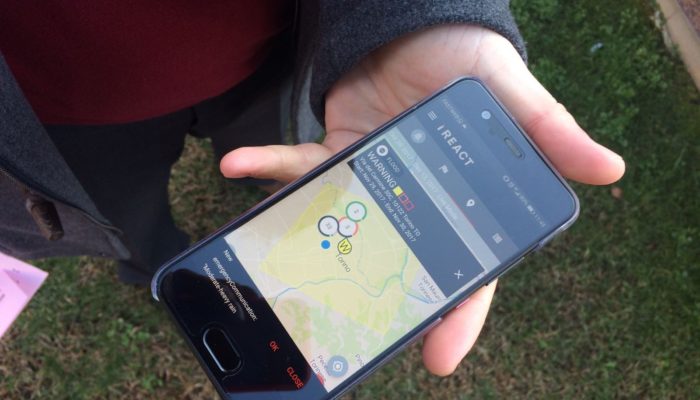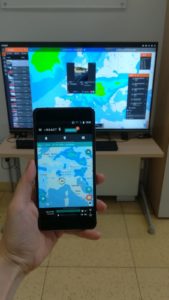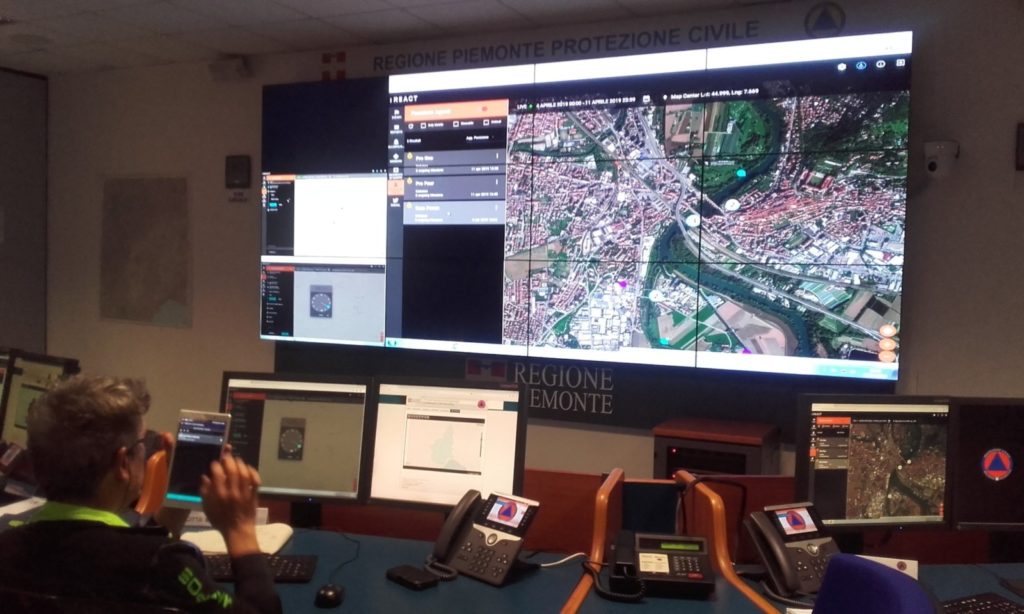
Technology has never been more at hand than at the time we are living. Smartphones and the many apps on the market are proof of this. As I recently discovered, there is also an app developed to learn about natural hazards and, as they claim, fight disasters! This app is called I-REACT, and it was born from a homonymous innovation project funded by the European Commission and developed by a consortium of 20 partners. Their aim?
use social media, smartphones and wearables to improve disaster management
Of course, when I found out about the project, I curiously downloaded the app and started playing around with it, trying to figure out what it does and how it works. I have to say that I haven’t had the chance of reporting a disaster yet (and hopefully I won’t have even in the future), but I can say I find it user-friendly and exciting. Let’s get a bit more into details and understand this project and the app directly from the I-REACT Team!
Hi I-REACT Team! Can you tell us who you are and how the I-REACT idea was born?
My name is Fabrizio Dominici. I’m Head of Data Science at LINKS Foundation and coordinator of I-REACT. I-REACT is an innovation project that uses big data, social media, smartphones and wearables to improve disaster management.
The project was born in 2016, within a European Commission call for proposals for more resilient and secure societies. We joined together 20 partners that are among the top experts to create a unified system for disaster management that responds to the needs of the three main actors in a disaster situation: emergency responders, decision-makers and citizens (all of ‘us’, Ed.).
The main idea of the project is to offer each one of us the best tools to prevent and face disasters. And in this context, I-REACT, as a project, provides a big data platform that crosses over inputs from different sources: satellites, social media, weather forecasts and much more. This, joined with a Decision Support System, is a crucial companion for emergency responders and decision-makers.
For citizens, we developed the I-REACT app, which empowers them against disasters.
How is the app actually improving disaster management?
Communicating with citizens before and during disasters and promoting self-protection behaviours in the population are major challenges in disaster management. When a flood or a wildfire starts, the emergency response teams have protocols to follow, gear to use, etc. so they know what to do. Meanwhile, citizens usually do not know how to act, what to do, or if they should move or not. The I-REACT app is designed precisely for that. Our approach aims to empower all European citizens, enabling them to take a more active role in preventing disasters.

In this photo, the app on a smartphone and the administration system on the screen behind. Image credit: I-REACT
I find particularly interesting the ‘learning’ and engaging part of the app and up to now quite useful the forecasting part for temperature and precipitations! Can you briefly describe the main features of the app?
The users of the app can monitor environmental conditions and share useful information such as photos and other data that will help other citizens to be prepared. Say you are hiking and spot a fire. You go to a safe spot, open the I-REACT app and you can send a photo of what you see, along with useful information: is the wind blowing? Is the fire spreading fast? How high are the flames? This information is available for the rest of the users of the app; you can see what other people are posting and assess the accuracy of their information.
There is also a “tips & quizzes” section, where you can learn what to do in different disaster situations such as floods and fires. These tips & quizzes are not only focused on the response against disasters, but they also cover preparedness as well!
We also wanted for the app to be as interactive as possible, so the whole process is gamified: you can unlock badges and compete with other users, to become the overall I-REACT champion.
promoting self-protection behaviours in the population are major challenges
Can the app also be used to receive warning messages from the local authorities?
The app as it is today doesn’t receive warning messages from local authorities. It has the potentiality to do so, but in order to, the system has to be adopted by the local authorities. This means that if the council of Barcelona, for example, implements I-REACT within his emergency management services, they will be able to send warning messages directly through the app to the users located within their jurisdiction.
Is the information collected by the citizens used by, for example, civil protection or decision-makers directly? If yes, how? If no, why?
The information collected right now by the app is not used by civil protection or decision-makers. It’s meant to be used that way, but due to current legislation, civil protection services and decision-makers have to incorporate I-REACT into their emergency management services first, in order to access that data.
So we now have a platform that is really useful for raising awareness between citizens themselves, and it has a big potential once it is contracted by civil protection services, by making the data available directly to first responders and decision-makers.
What are the main challenges encountered during the project?
I-REACT is a European project composed of 20 partners that come from different backgrounds (emergency response, software developers, researchers, hardware designers, and more). From this multidisciplinary collaboration, we wanted to leverage the diversity of the consortium but also to not lose the ultimate scope of designing disaster management solutions for people. For this reason, we performed co-design exercises with civil protection services, decision-makers, emergency service providers and science and technology experts throughout the project. In this way, we could have a crucial and meaningful exchange of information: stakeholders could see how the contribution of our technology help their daily operations, and we could improve the app according to their suggestions. It is a bottom-up approach: instead of developing something ourselves and try to impose it on the market, we designed something that targets the end-users needs.

The photo was taken during a demonstration of the app functionality at the Department of Civil Protection of Piedmont in Italy. Image Credit: I-REACT
If I understand right, the project is about to come to an end, and the app was one of the results. Do you have already feedback from users?
We have had very encouraging feedback, not only for the app. We have organised several international demos of the I-REACT system with civil protection services and responders and gathered very useful feedback. The app has also gathered a lot of attention, with over 90 ratings on Play Store and more than 11,000 downloads. And we are always looking for more feedback, so if you download it, let us know what you think by sending us an email or talking with us on social media.
So we now have a platform that is really useful for raising awareness between citizens themselves, and it has a big potential once it is contracted by civil protection services, by making the data available directly to first responders and decision-makers.
One last curiosity from my side, I’m a volcanologist, and it could not pass unnoticed that there aren’t volcanoes among the ‘Tips & Quizzes’, how so? If it is in the category ‘Other’, I must admit I haven’t gotten to the end of the 112 tips yet!
Since time was an issue, we had to focus on the most common disasters in Europe, mostly floods, wildfires, heavy rains and earthquakes. But of course, volcanoes are also there – if you want to know more about them, you’ll have to download the app and find out!
The app is available for Android and IOS systems on the related app stores.
